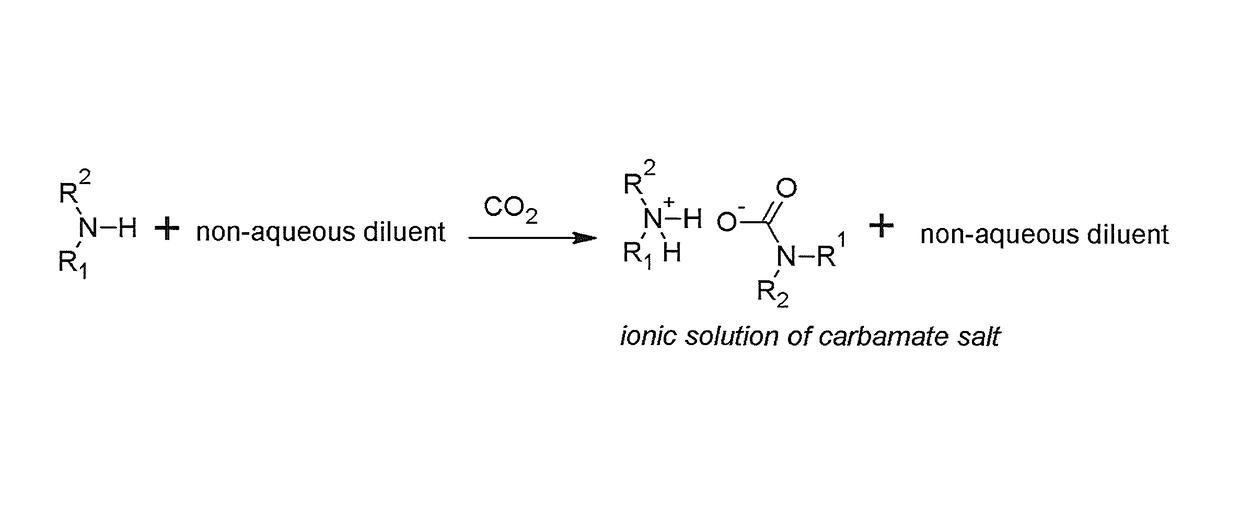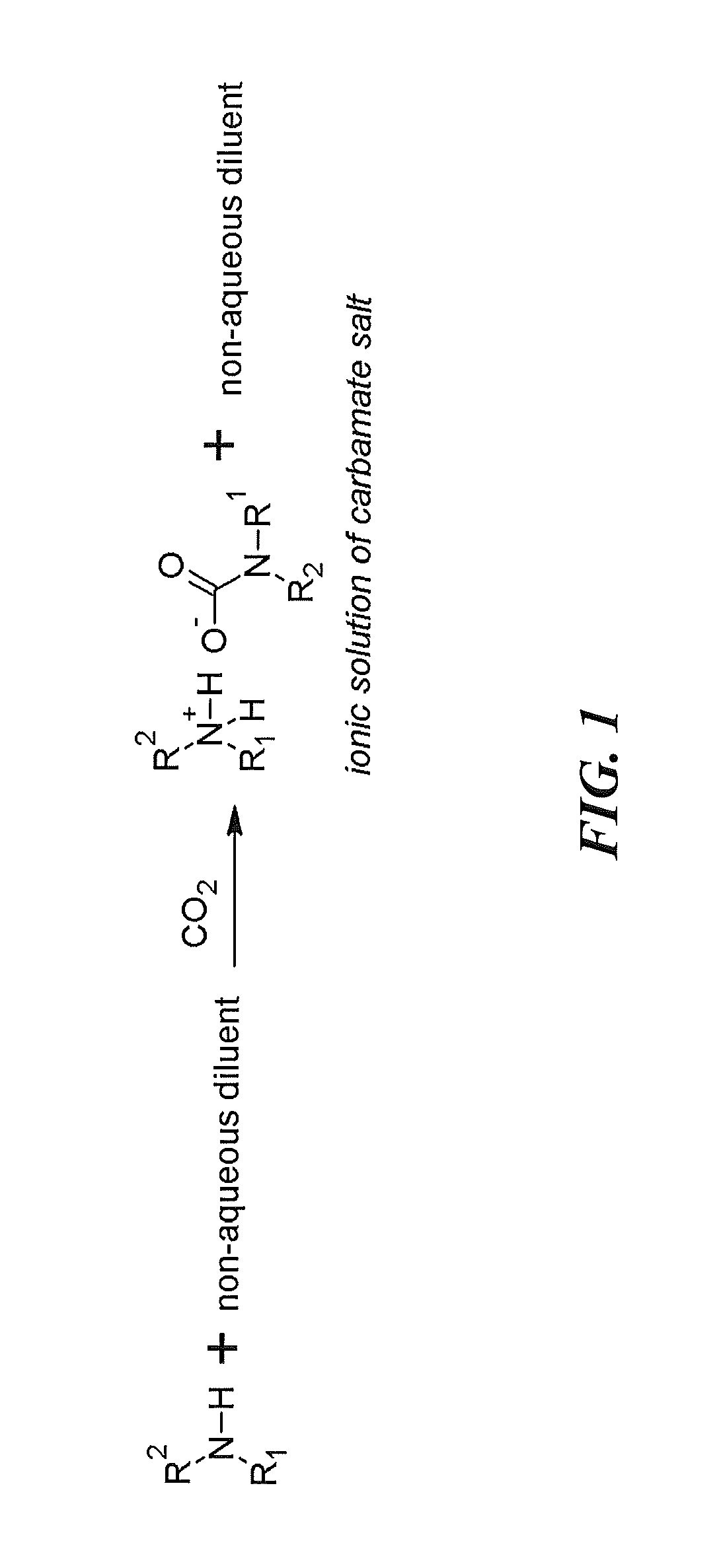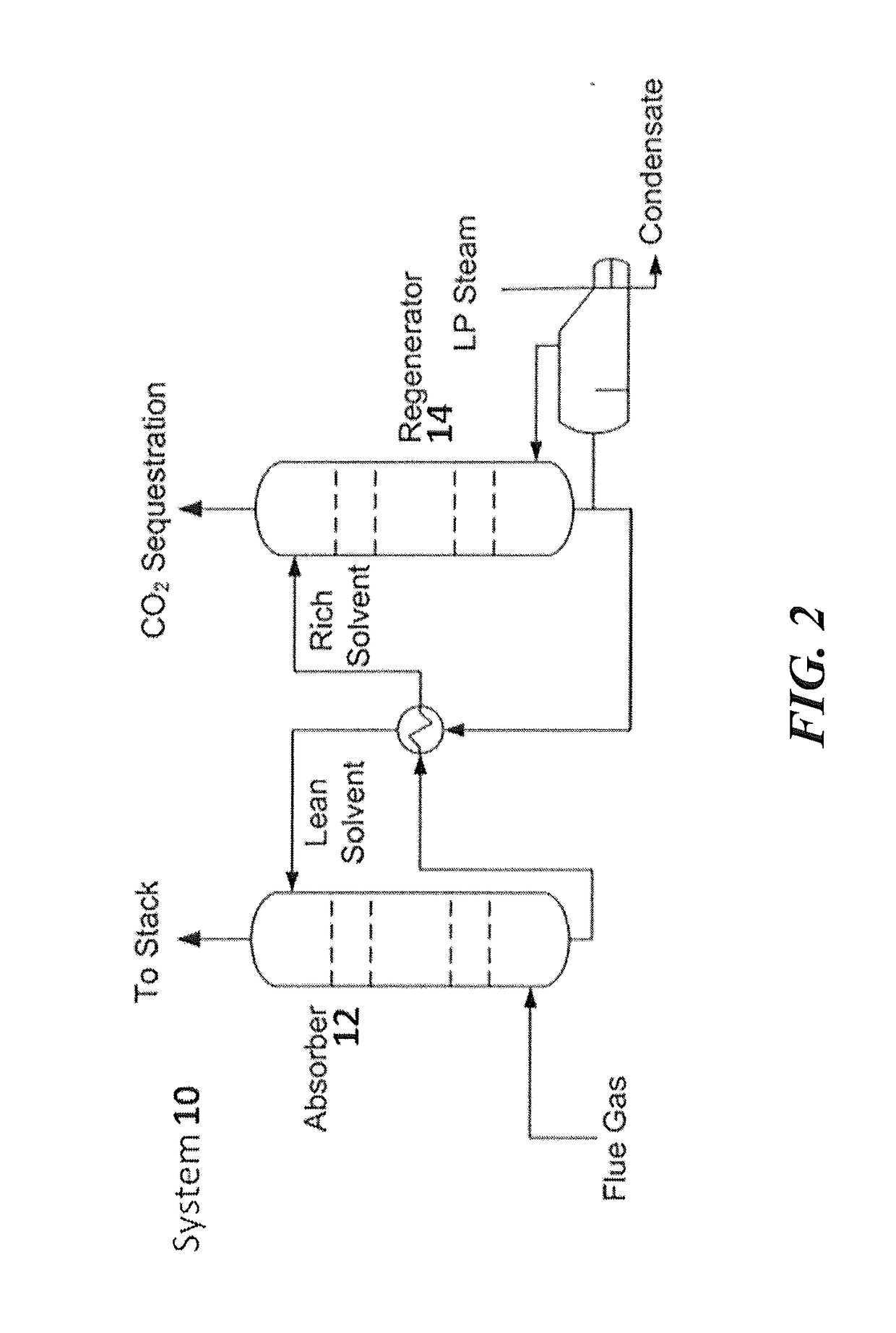Regenerable solvent mixtures for acid-gas separation
a solvent mixture and acid-gas technology, applied in the field of solvent systems, can solve the problems of contributing to the cost of purified products, the cost of purified acid-gas has become a significant hurdle, and the performance of flue gas is not good in the humid, near-ambient pressure conditions
- Summary
- Abstract
- Description
- Claims
- Application Information
AI Technical Summary
Benefits of technology
Problems solved by technology
Method used
Image
Examples
example 1
Reaction Between CO2 and 2-Fluorophenethylamine in Solution with 4-Methoxy Phenol as Diluent
[0059]Reaction between CO2 and 2-fluorophenethylamine (2-FPEA) in solution with a methyl substituted phenol, specifically for this example 4-methoxy phenol (4-MeOPh), was initially observed using a standard semi-batch reactor system in which the amine solution was contained in the reaction vessel and a gas stream containing CO2 was bubbled through the amine solution. The CO2 concentration of the feed gas and reactor outlet gas streams was monitored via a NDIR CO2 analyzer to determine extent of CO2-amine reaction. Upon introduction of the CO2 containing gas stream to the amine solution resulted in a reduction in the CO2 content of the reactor outlet gas stream indicating that CO2 was reacting with the amine solution. Reaction with CO2 was accompanied by a small temperature rise in amine solution temperature from 25.5 to 27° C. due to the exothermic nature of the reaction. The reaction was con...
example 2
Reaction Between CO2 and 2-Fluorophenethylamine in Solution with 2,2,3,3-Tetrafluoropropanol (TFP) and 2,2,3,3,4,4,5,5-Octafluoropentanol (OFP) as Diluents
[0061]Reaction between CO2 and 2-fluorophenethylamine (2-FPEA) in solution with fluorinated alcohols, specifically for this example 2,2,3,3-tetrafluoropropanol (TFP) and 2,2,3,3,4,4,5,5-octafluoropentanol (OFP), was initially observed using a standard semi-batch reactor system in which the amine solution was contained in the reaction vessel and a gas stream containing CO2 was bubbled through the amine solution. The CO2 concentration of the feed gas and reactor outlet gas streams was monitored via a NDIR CO2 analyzer to determine extent of CO2-amine reaction. For both amine solutions, 2-FPEA / TFP and 2-FPEA / OFP, the uptake of CO2 was very rapid and near complete removal of CO2 from the flowing gas stream was observed. Reaction with CO2 was accompanied by a rise in amine solution temperature from 26.5 to 29.5° C. (2-FPEA / TFP) and 23....
example 3
Reaction Between CO2 and 2-Fluorophenethylamine in Solution with Chloroform as Diluent
[0063]Observation of the reaction between CO2 and 2-fluorophenethylamine (2-FPEA) in solution with chlorinated hydrocarbons, specifically for this example deuterated chloroform, was observed by 1H and 19F NMR. An NMR experiment was conducted in deuterated chloroform solvent containing only 2-fluorophenethylamine. 19F NMR of 2-FPEA / deuterated chloroform mixture is shown in the top spectrum of FIG. 8 and shows a single 19F resonance corresponding to the fluorine nuclei labeled F1 associated with 2-FPEA. After purging the 2-FPEA / deuterated chloroform mixture with CO2, a total of two unique 19F resonances are observed that correspond to the fluorine nuclei labeled F1 and F1′ as shown in the bottom spectrum of FIG. 8. The new F1′ resonance is associated with the CO2-amine reaction product—2-fluorophenethylamine carbamate. The corresponding 1H NMR spectra, shown in FIG. 9 also indicate that the 2-fluorop...
PUM
| Property | Measurement | Unit |
|---|---|---|
| solubility | aaaaa | aaaaa |
| solubility | aaaaa | aaaaa |
| temperature | aaaaa | aaaaa |
Abstract
Description
Claims
Application Information
 Login to View More
Login to View More - R&D
- Intellectual Property
- Life Sciences
- Materials
- Tech Scout
- Unparalleled Data Quality
- Higher Quality Content
- 60% Fewer Hallucinations
Browse by: Latest US Patents, China's latest patents, Technical Efficacy Thesaurus, Application Domain, Technology Topic, Popular Technical Reports.
© 2025 PatSnap. All rights reserved.Legal|Privacy policy|Modern Slavery Act Transparency Statement|Sitemap|About US| Contact US: help@patsnap.com



